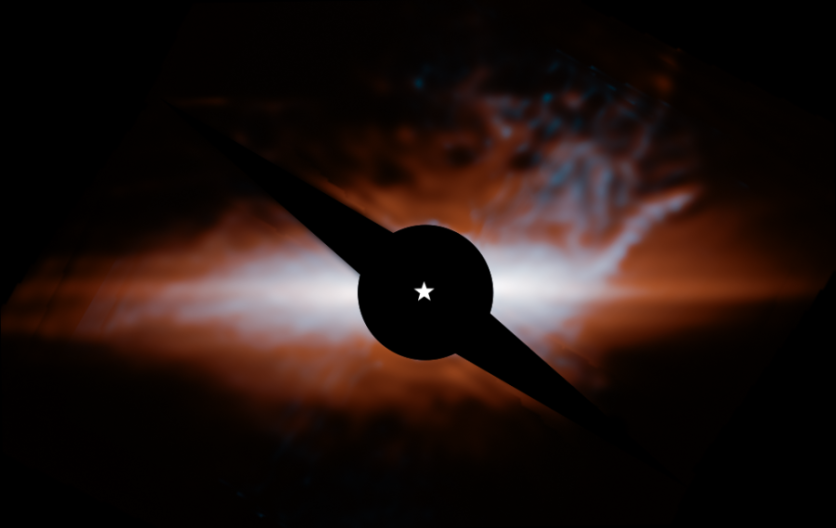NASA's James Webb Space Telescope has brought forth new revelations about the Beta Pictoris system, a young planetary system situated 63 light-years away.
This celestial system has captivated scientists with its unique features, including the first dust disk imaged around another star, formed from collisions between asteroids, comets, and planetesimals. Webb has unveiled an unprecedented structure in the Beta Pictoris system, described as a "cat's tail."

Beta Pic's Debris Disks
Led by Isabel Rebollido of the Astrobiology Center in Spain, a team of astronomers used the telescope's Near-Infrared Camera (NIRCam) and Mid-Infrared Instrument (MIRI) to explore the composition of Beta Pic's main and secondary debris disks.
The findings surpassed expectations, revealing a distinctive branch of dust extending like a cat's tail from the southwest portion of the secondary debris disk.
"Beta Pictoris is the debris disk that has it all: It has a really bright, close star that we can study very well, and a complex circumstellar environment with a multi-component disk, exocomets, and two imaged exoplanets," Rebollido said in a statement.
"While there have been previous observations from the ground in this wavelength range, they did not have the sensitivity and the spatial resolution that we now have with Webb, so they didn't detect this feature," she added.
The cat's tail feature, shaped like a sharply inclined branch, was primarily visible in the MIRI data, emphasizing the significance of observing Beta Pic in the mid-infrared range. The mid-infrared data also indicated temperature differences between Beta Pic's two disks, suggesting variations in composition.
The team theorizes that the dust responsible for the cat's tail is highly porous "organic refractory material," similar to the substances found on comets and asteroids in our solar system.
The unique curvature of the tail has prompted the team to propose a hypothesis that a dust production event occurred approximately a century ago, resulting in the observed tendril of dust.
Optical Illusion?
Marshall Perrin, a co-author at the Space Telescope Science Institute, explained that when an event like a collision occurs, it generates a substantial amount of dust. Initially, the dust follows the same orbital direction as its source, but it begins to disperse over time.
The star's light exerts more force on the smaller, lighter dust particles, causing them to move away from the star at a faster rate. In contrast, the larger grains experience less movement, forming an extended dust tendril.
Despite the peculiar angle created by the perspective and curvature of the tail, the team believes it is an optical illusion. The arc of material deviates from the disk at a modest five-degree incline.
The brightness of the cat's tail indicates a dust quantity equivalent to that of a large main belt asteroid dispersed across an impressive span of 10 billion miles. This recent finding also illuminates an asymmetrical extension of the inclined inner disk, observable only on the side opposite to the tail.
The extension and a previously identified carbon monoxide (CO) cluster near the cat's tail pointed to recent collision-induced dust production within Beta Pic's debris disks. According to NASA, the persistent CO concentration could serve as potential evidence of this event.
Related Article : NASA's Picture of the Day Features the 'Shakespearean' Moons of Uranus

ⓒ 2025 TECHTIMES.com All rights reserved. Do not reproduce without permission.




